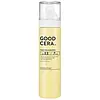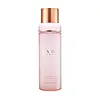What's inside
What's inside
 Key Ingredients
Key Ingredients

 Benefits
Benefits

 Concerns
Concerns

 Ingredients Side-by-side
Ingredients Side-by-side

Water
Skin ConditioningMethylpropanediol
SolventPentylene Glycol
Skin ConditioningGlycerin
HumectantDiphenyl Dimethicone
EmollientTriethylhexanoin
MaskingPolyglyceryl-10 Myristate
Skin ConditioningXanthan Gum
EmulsifyingAmaranthus Caudatus Seed Extract
Skin ConditioningUlmus Davidiana Root Extract
Skin ConditioningCentella Asiatica Extract
CleansingFicus Carica Fruit Extract
HumectantBacillus Ferment
Skin ConditioningEthylhexylglycerin
Skin ConditioningSodium Citrate
BufferingHydrogenated Lecithin
EmulsifyingCarbomer
Emulsion StabilisingCitric Acid
BufferingDisodium EDTA
Dipropylene Glycol
HumectantButylene Glycol
HumectantDecyl Glucoside
CleansingCitrus Aurantium Bergamia Fruit Oil
MaskingAlteromonas Ferment Filtrate
HumectantLavandula Angustifolia Oil
MaskingChamomilla Recutita Flower Oil
MaskingCitrus Aurantium Dulcis Oil
MaskingCymbopogon Schoenanthus Oil
MaskingPelargonium Graveolens Flower Oil
MaskingSodium Lauroyl Lactylate
EmulsifyingGlycerylamidoethyl Methacrylate/Stearyl Methacrylate Copolymer
HumectantPhytosphingosine
Skin ConditioningCholesterol
EmollientCeramide NP
Skin ConditioningCeramide AP
Skin ConditioningCeramide EOP
Skin ConditioningWater, Methylpropanediol, Pentylene Glycol, Glycerin, Diphenyl Dimethicone, Triethylhexanoin, Polyglyceryl-10 Myristate, Xanthan Gum, Amaranthus Caudatus Seed Extract, Ulmus Davidiana Root Extract, Centella Asiatica Extract, Ficus Carica Fruit Extract, Bacillus Ferment, Ethylhexylglycerin, Sodium Citrate, Hydrogenated Lecithin, Carbomer, Citric Acid, Disodium EDTA, Dipropylene Glycol, Butylene Glycol, Decyl Glucoside, Citrus Aurantium Bergamia Fruit Oil, Alteromonas Ferment Filtrate, Lavandula Angustifolia Oil, Chamomilla Recutita Flower Oil, Citrus Aurantium Dulcis Oil, Cymbopogon Schoenanthus Oil, Pelargonium Graveolens Flower Oil, Sodium Lauroyl Lactylate, Glycerylamidoethyl Methacrylate/Stearyl Methacrylate Copolymer, Phytosphingosine, Cholesterol, Ceramide NP, Ceramide AP, Ceramide EOP
Collagen Extract
Skin ConditioningPropanediol
SolventButylene Glycol
HumectantNiacinamide
Smoothing1,2-Hexanediol
Skin ConditioningPunica Granatum Flower Extract
Skin ConditioningCandida/Garcinia Cambogia Ferment
Zea Mays Germ Oil
EmollientActinidia Chinensis Fruit Extract
EmollientChlorella Vulgaris Extract
Skin ConditioningEel Extract
HumectantCamellia Sinensis Leaf Extract
AntimicrobialSchisandra Chinensis Callus Extract
Skin ProtectingCurcuma Longa Root Extract
MaskingHydrolyzed Collagen
EmollientUlmus Davidiana Root Extract
Skin ConditioningSodium Hyaluronate
HumectantHyaluronic Acid
HumectantHydrolyzed Hyaluronic Acid
HumectantCeteareth-12
EmulsifyingGlycerin
HumectantGlyceryl Stearate
EmollientPolyglyceryl-2 Oleate
EmulsifyingPEG-60 Hydrogenated Castor Oil
EmulsifyingCeteareth-20
CleansingCetearyl Isononanoate
EmollientCetyl Palmitate
EmollientOctyldodeceth-16
EmulsifyingEthylhexylglycerin
Skin ConditioningAdenosine
Skin ConditioningSodium Citrate
BufferingCitric Acid
BufferingSoluble Proteoglycan
Skin ConditioningHydrolyzed Sodium Hyaluronate
Skin ConditioningHydroxypropyltrimonium Hyaluronate
PEG-9 Diglycidyl Ether/Sodium Hyaluronate Crosspolymer
Skin ConditioningPotassium Hyaluronate
Skin ConditioningSodium Acetylated Hyaluronate
HumectantSodium Dna
Skin ConditioningDimethylsilanol Hyaluronate
HumectantWater
Skin ConditioningCetearyl Alcohol
EmollientDisodium EDTA
Phenoxyethanol
PreservativeSodium Benzoate
MaskingParfum
MaskingGardenia Taitensis Callus Extract
AntioxidantCollagen Extract, Propanediol, Butylene Glycol, Niacinamide, 1,2-Hexanediol, Punica Granatum Flower Extract, Candida/Garcinia Cambogia Ferment, Zea Mays Germ Oil, Actinidia Chinensis Fruit Extract, Chlorella Vulgaris Extract, Eel Extract, Camellia Sinensis Leaf Extract, Schisandra Chinensis Callus Extract, Curcuma Longa Root Extract, Hydrolyzed Collagen, Ulmus Davidiana Root Extract, Sodium Hyaluronate, Hyaluronic Acid, Hydrolyzed Hyaluronic Acid, Ceteareth-12, Glycerin, Glyceryl Stearate, Polyglyceryl-2 Oleate, PEG-60 Hydrogenated Castor Oil, Ceteareth-20, Cetearyl Isononanoate, Cetyl Palmitate, Octyldodeceth-16, Ethylhexylglycerin, Adenosine, Sodium Citrate, Citric Acid, Soluble Proteoglycan, Hydrolyzed Sodium Hyaluronate, Hydroxypropyltrimonium Hyaluronate, PEG-9 Diglycidyl Ether/Sodium Hyaluronate Crosspolymer, Potassium Hyaluronate, Sodium Acetylated Hyaluronate, Sodium Dna, Dimethylsilanol Hyaluronate, Water, Cetearyl Alcohol, Disodium EDTA, Phenoxyethanol, Sodium Benzoate, Parfum, Gardenia Taitensis Callus Extract
 Reviews
Reviews

Ingredients Explained
These ingredients are found in both products.
Ingredients higher up in an ingredient list are typically present in a larger amount.
Butylene Glycol (or BG) is used within cosmetic products for a few different reasons:
Overall, Butylene Glycol is a safe and well-rounded ingredient that works well with other ingredients.
Though this ingredient works well with most skin types, some people with sensitive skin may experience a reaction such as allergic rashes, closed comedones, or itchiness.
Learn more about Butylene GlycolCitric Acid is an alpha hydroxy acid (AHA) naturally found in citrus fruits like oranges, lemons, and limes.
Like other AHAs, citric acid can exfoliate skin by breaking down the bonds that hold dead skin cells together. This helps reveal smoother and brighter skin underneath.
However, this exfoliating effect only happens at high concentrations (20%) which can be hard to find in cosmetic products.
Due to this, citric acid is usually included in small amounts as a pH adjuster. This helps keep products slightly more acidic and compatible with skin's natural pH.
In skincare formulas, citric acid can:
While it can provide some skin benefits, research shows lactic acid and glycolic acid are generally more effective and less irritating exfoliants.
Most citric acid used in skincare today is made by fermenting sugars (usually from molasses). This synthetic version is identical to the natural citrus form but easier to stabilize and use in formulations.
Read more about some other popular AHA's here:
Learn more about Citric AcidDisodium EDTA plays a role in making products more stable by aiding other preservatives.
It is a chelating agent, meaning it neutralizes metal ions that may be found in a product.
Disodium EDTA is a salt of edetic acid and is found to be safe in cosmetic ingredients.
Learn more about Disodium EDTAEthylhexylglycerin (we can't pronounce this either) is commonly used as a preservative and skin softener. It is derived from glyceryl.
You might see Ethylhexylglycerin often paired with other preservatives such as phenoxyethanol. Ethylhexylglycerin has been found to increase the effectiveness of these other preservatives.
Glycerin is already naturally found in your skin. It helps moisturize and protect your skin.
A study from 2016 found glycerin to be more effective as a humectant than AHAs and hyaluronic acid.
As a humectant, it helps the skin stay hydrated by pulling moisture to your skin. The low molecular weight of glycerin allows it to pull moisture into the deeper layers of your skin.
Hydrated skin improves your skin barrier; Your skin barrier helps protect against irritants and bacteria.
Glycerin has also been found to have antimicrobial and antiviral properties. Due to these properties, glycerin is often used in wound and burn treatments.
In cosmetics, glycerin is usually derived from plants such as soybean or palm. However, it can also be sourced from animals, such as tallow or animal fat.
This ingredient is organic, colorless, odorless, and non-toxic.
Glycerin is the name for this ingredient in American English. British English uses Glycerol/Glycerine.
Learn more about GlycerinSodium Citrate is the sodium salts of citric acid. In skincare, it is used to alter pH levels and acts as a preservative.
Its main functions are to maintain the pH of a product and neutralize metal ions.
The acidity of our skin is maintained by our glands and skin biome; normal pH level of skin is slightly acidic (~4.75-5.5).
Being slightly acidic allows our skin to create an "acid mantle". This acid mantle is a thin barrier that protects our skin from bacteria and contaminants.
Learn more about Sodium CitrateThis tree is also known as the David Elm. It contains the ingredient bakuchiol.
Other great compounds found in this ingredient include galactose, glucose, and phenolics. The sugar content gives it great skin hydrating properties. Phenolics are potent antioxidants commonly found in fruits and veggies.
A 2020 study found the phenolics of this root to have an anti-inflammatory effect.
Fun fact: This ingredient is used in traditional Asian medicine.
Learn more about Ulmus Davidiana Root ExtractWater. It's the most common cosmetic ingredient of all. You'll usually see it at the top of ingredient lists, meaning that it makes up the largest part of the product.
So why is it so popular? Water most often acts as a solvent - this means that it helps dissolve other ingredients into the formulation.
You'll also recognize water as that liquid we all need to stay alive. If you see this, drink a glass of water. Stay hydrated!
Learn more about Water